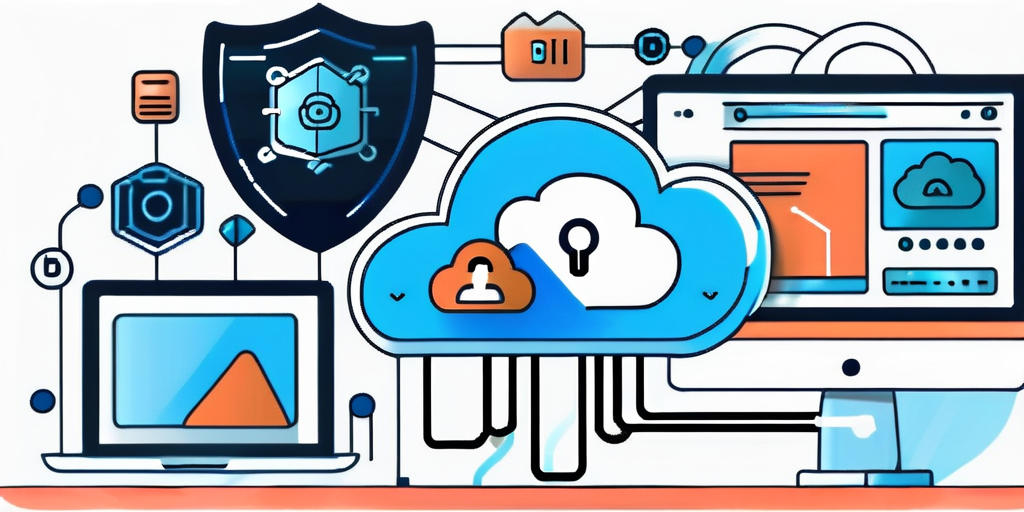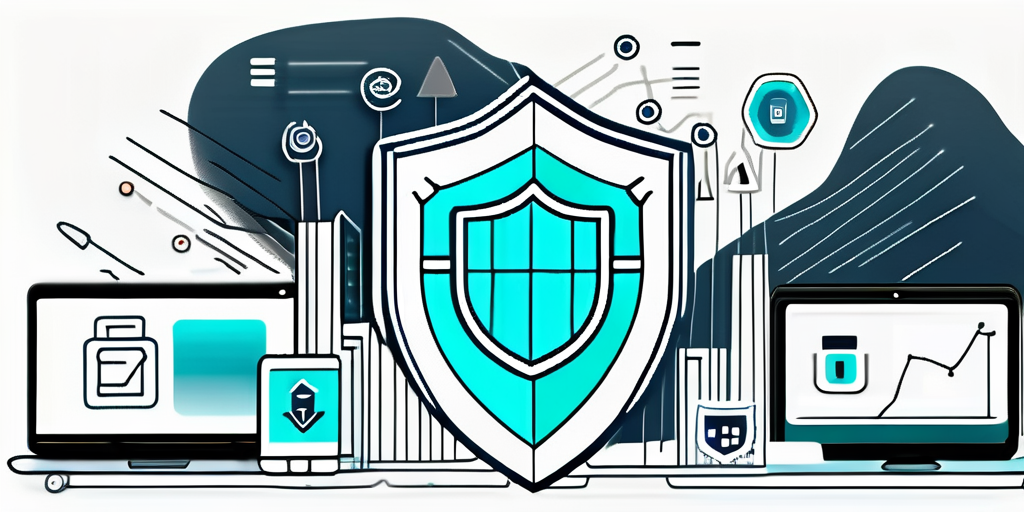In today’s rapidly advancing digital landscape, the adoption of cloud-based applications has significantly increased. While these applications offer numerous benefits, such as scalability and cost-efficiency, they also raise concerns about security vulnerabilities. Ensuring the security of cloud app environments has become crucial in avoiding potential breaches and protecting sensitive data. This article will discuss the challenges associated with cloud app security testing and explore strategies to overcome them.
Understanding Cloud App Security
Cloud app security refers to the measures and processes implemented to protect cloud-based applications from unauthorized access, data breaches, and other potential threats. As more organizations embrace cloud computing, they must understand the importance of safeguarding their cloud apps and the underlying infrastructure.
Cloud app security encompasses a wide range of practices and technologies designed to ensure the confidentiality, integrity, and availability of data stored and processed within these applications. It goes beyond traditional security measures to address the unique challenges posed by cloud computing.
One of the key reasons why cloud app security is so important is the increasing reliance on cloud-based applications by businesses. These applications often store and process sensitive data, including customer information, financial records, and intellectual property. Without proper security measures in place, this data is at risk of being accessed or compromised by unauthorized individuals.
The Importance of Cloud App Security
As businesses increasingly rely on cloud-based applications, the need for robust security measures becomes paramount. Cloud app security ensures the confidentiality, integrity, and availability of data stored and processed within these applications. It helps maintain customer trust, comply with data protection regulations, and prevent costly data breaches that can lead to reputational damage.
Organizations can mitigate the risks associated with cloud computing and protect their valuable assets by implementing effective cloud app security measures. This includes implementing strong authentication mechanisms, encryption protocols, and secure coding practices.
Key Concepts in Cloud App Security
Several key concepts are essential for understanding cloud app security. Authentication and authorization mechanisms, encryption protocols, and secure coding practices are crucial components of securing cloud-based applications.
Authentication mechanisms verify the identity of users before granting access to cloud apps, preventing unauthorized individuals from gaining entry. This can involve various methods, such as username and password authentication, multi-factor authentication, or biometric authentication.
Authorization ensures that users have appropriate permissions and privileges to access specific resources within the application. It involves defining access control policies and enforcing them to prevent unauthorized access to sensitive data or functionalities.
Encryption protocols protect data while in transit and at rest, ensuring that any intercepted information remains unintelligible to unauthorized parties. This involves encrypting data using strong algorithms and securely managing encryption keys.
Secure coding practices involve adhering to industry best practices and standards to eliminate vulnerabilities in the application’s code, reducing the potential for exploitation. This includes regular code reviews, vulnerability assessments, and secure development methodologies.
Additionally, continuous monitoring, threat intelligence, and incident response capabilities are essential for detecting and responding to security incidents in cloud-based applications. These practices help organizations stay ahead of emerging threats and minimize the impact of potential breaches.
In conclusion, cloud app security is a critical aspect of cloud computing that organizations must prioritize. By implementing robust security measures and adhering to best practices, businesses can protect their cloud-based applications and the sensitive data they store and process.
Common Challenges in Cloud App Security Testing
Despite the importance of cloud app security, organizations often face various challenges when testing the security of their cloud-based applications. Understanding these challenges is crucial in effectively addressing them and minimizing potential risks.

When it comes to cloud app security testing, there are several key areas that organizations need to focus on to ensure the robustness of their applications. Let’s explore some of these challenges in more detail:
Identifying Vulnerabilities in Cloud Apps
One of the primary challenges in cloud app security testing is identifying vulnerabilities that may exist within the application. Cloud apps often rely on numerous components, such as APIs, third-party integrations, and complex architectures. Identifying vulnerabilities across these layers requires a comprehensive approach.
Traditional vulnerability scanning tools may not be sufficient in detecting vulnerabilities specific to cloud-based environments. Specialized tools and techniques are often required to identify security flaws inherent to cloud apps.
For example, penetration testing, also known as ethical hacking, can be employed to simulate real-world attacks and identify potential vulnerabilities. This involves skilled security professionals attempting to exploit weaknesses in the application’s defenses, providing valuable insights into areas that need improvement.
Additionally, static and dynamic code analysis can be used to identify vulnerabilities in the application’s source code. This involves analyzing the code for common security pitfalls, such as input validation vulnerabilities or insecure coding practices.
Managing Data Privacy and Compliance
Cloud app security testing must also consider data privacy and compliance regulations. Depending on the nature of the data being processed, organizations may be subject to specific legal and industry requirements, such as the General Data Protection Regulation (GDPR) or the Health Insurance Portability and Accountability Act (HIPAA).
Ensuring that cloud apps adhere to these regulations requires careful consideration of data privacy measures and compliance testing. This involves evaluating the data protection mechanisms in place, assessing how data is stored and transmitted, and verifying that the application complies with relevant regulations.
Organizations must also consider the geographical location of their cloud service providers, as different countries may have varying data protection laws. This adds an additional layer of complexity to cloud app security testing, as organizations need to ensure that their data is stored and processed in compliance with the applicable regulations.
To address these challenges, organizations can implement encryption techniques to protect sensitive data both at rest and in transit. Regular audits and assessments can also be conducted to ensure ongoing compliance with data privacy regulations.
By understanding and addressing these challenges, organizations can enhance the security of their cloud-based applications and protect sensitive data from potential threats.
Overcoming Security Testing Challenges
Organizations can implement various strategies and incorporate best practices into their testing processes to overcome the challenges associated with cloud app security testing. These strategies involve a multi-layered approach that encompasses different testing techniques and methodologies.

Implementing Security Testing Strategies
Effective security testing strategies involve a multi-layered approach that encompasses different testing techniques and methodologies. This includes conducting vulnerability assessments, penetration testing, and code review to identify and address potential security vulnerabilities in cloud apps.
Organizations can use automated tools to scan the application and identify potential weaknesses when conducting vulnerability assessments. These tools simulate attacks and identify vulnerabilities that malicious actors could exploit. By conducting regular vulnerability assessments, organizations can stay proactive in identifying and addressing security vulnerabilities before they can be exploited.
Penetration testing is another crucial aspect of security testing. It involves simulating real-world attacks to identify vulnerabilities and assess the effectiveness of security controls. Penetration testing can help organizations identify potential weaknesses in their cloud apps and take necessary steps to strengthen their security posture.
In addition to vulnerability assessments and penetration testing, organizations should also incorporate code review into their security testing practices. Code review involves analyzing the source code of the application to identify coding errors and potential security vulnerabilities. By conducting regular code reviews, organizations can ensure that their cloud apps are built with security in mind.
Regularly performing security testing is crucial, allowing organizations to identify vulnerabilities before malicious actors can exploit them. Organizations should establish a robust testing schedule and ensure that security testing is an integral part of their development lifecycle. By incorporating security testing into the development process, organizations can minimize the risk of security breaches and ensure the overall integrity of their cloud apps.
Leveraging Automation in Security Testing
Automation can significantly enhance the efficiency and effectiveness of cloud app security testing. By automating certain testing processes, organizations can reduce the time and effort required to perform comprehensive security assessments.
Automated security testing tools and frameworks can scan the application for vulnerabilities, conduct static code analysis, and simulate attacks to identify potential weaknesses. These tools can automatically identify common security vulnerabilities, such as cross-site scripting (XSS) and SQL injection, saving time and effort for security testers.
Furthermore, automation allows for faster detection of vulnerabilities and quicker remediation. By automating the security testing process, organizations can identify and address vulnerabilities in a timely manner, reducing the window of opportunity for potential attackers.
Automation also enables organizations to scale their security testing efforts. With the increasing complexity of cloud apps and the need for continuous delivery, manual security testing alone may not be sufficient. By leveraging automation, organizations can perform security testing more frequently and efficiently, ensuring the ongoing security of their cloud apps.
In conclusion, overcoming security testing challenges in cloud app development requires implementing effective strategies and leveraging automation. By adopting a multi-layered approach to security testing and incorporating regular vulnerability assessments, penetration testing, and code review, organizations can identify and address potential security vulnerabilities. Additionally, by leveraging automation tools and frameworks, organizations can enhance the efficiency and effectiveness of their security testing efforts, ensuring the overall security of their cloud apps.
Future Trends in Cloud App Security Testing
As technology continues to evolve, the field of cloud app security testing is also expected to undergo significant advancements. Two notable trends that are likely to shape the future of cloud app security testing are the integration of artificial intelligence (AI) and machine learning and the impact of evolving cyber threats.

The Role of AI and Machine Learning
AI and machine learning technologies can be leveraged to enhance the effectiveness of cloud app security testing. These advanced algorithms can analyze vast amounts of data, identify patterns, and detect anomalies that may indicate potential security vulnerabilities.
By incorporating AI and machine learning into security testing processes, organizations can gain deeper insights into emerging threat landscapes, predict potential attack vectors, and proactively address vulnerabilities, ultimately bolstering the security of their cloud apps.
For example, AI-powered algorithms can continuously monitor user behavior patterns within a cloud app, identifying any unusual activities that may indicate a security breach. Machine learning algorithms can then analyze these patterns and adapt the security measures accordingly, ensuring that the app remains protected against evolving threats.
Furthermore, AI and machine learning can also assist in automating the testing process, reducing the time and effort required for manual testing. This automation can help organizations scale their security testing efforts and ensure comprehensive coverage across all aspects of their cloud apps.
The Impact of Evolving Cyber Threats
As cyber threats continue to evolve and become more sophisticated, cloud app security testing must adapt accordingly. Organizations must stay vigilant and keep pace with emerging threats to effectively protect their cloud apps.
Continuous monitoring and regular updates to security testing practices are essential to mitigate the risks associated with new attack vectors. Organizations should also collaborate with industry experts and share information to stay informed about the latest threats and countermeasures.
One emerging cyber threat that organizations must be aware of is the rise of ransomware attacks targeting cloud apps. Ransomware is a type of malicious software that encrypts a user’s data and demands a ransom for its release. With the increasing adoption of cloud apps, cybercriminals are finding new ways to exploit vulnerabilities and gain unauthorized access to sensitive data.
To combat this threat, organizations can implement multi-factor authentication, encryption, and regular data backups to minimize the impact of a potential ransomware attack. Additionally, conducting regular penetration testing and vulnerability assessments can help identify and address any weaknesses in the cloud app’s security infrastructure.
Moreover, as the Internet of Things (IoT) continues to expand, the security of cloud-connected devices becomes crucial. Organizations must ensure that their cloud apps are designed with robust security measures to prevent unauthorized access and protect user privacy.
In conclusion, cloud app security testing presents unique challenges that organizations must address to protect their sensitive data and maintain customer trust. By understanding the importance of cloud app security, implementing effective testing strategies, and leveraging automation, organizations can enhance the security of their cloud apps. Additionally, keeping an eye on future trends such as AI and machine learning integration and the impact of evolving cyber threats will help organizations stay ahead in the dynamic landscape of cloud app security testing.
As the digital threat landscape evolves, safeguarding your cloud applications is more critical than ever. Blue Goat Cyber, a Veteran-Owned business, is at the forefront of providing comprehensive B2B cybersecurity services. Our expertise spans medical device cybersecurity, HIPAA and FDA compliance, and SOC 2 and PCI penetration testing. We are dedicated to securing your business against sophisticated cyber threats. Contact us today for cybersecurity help! And let us protect your cloud apps with our robust security solutions.


